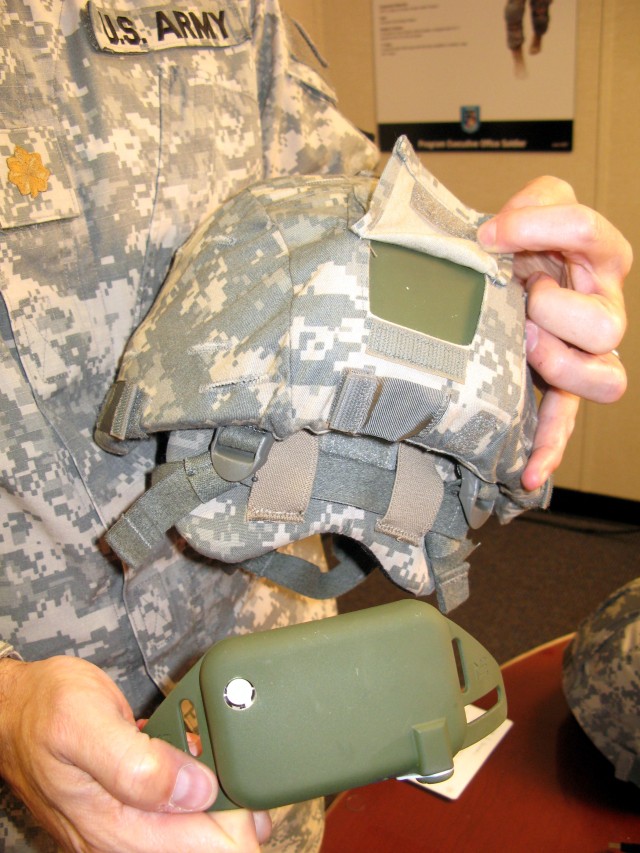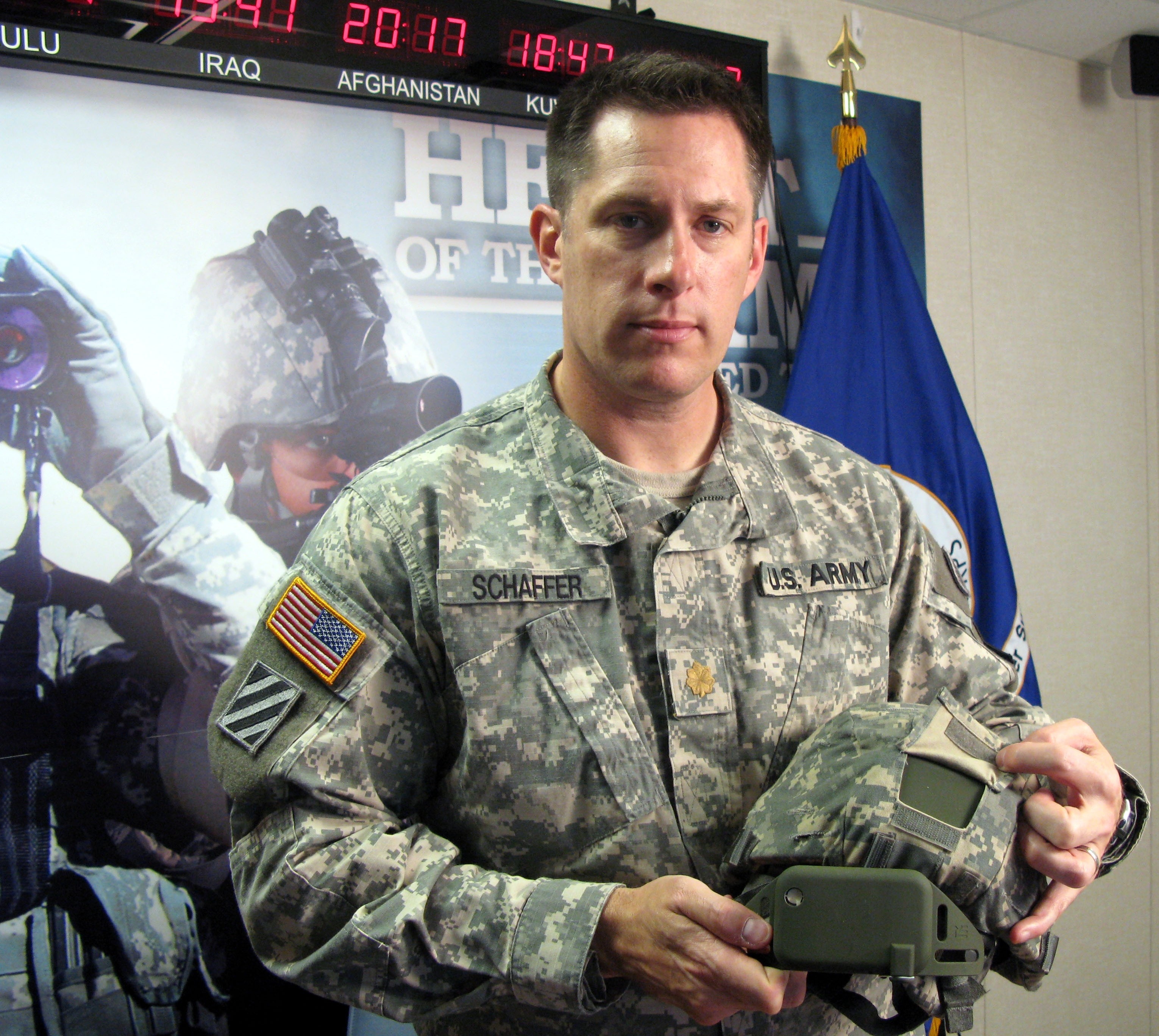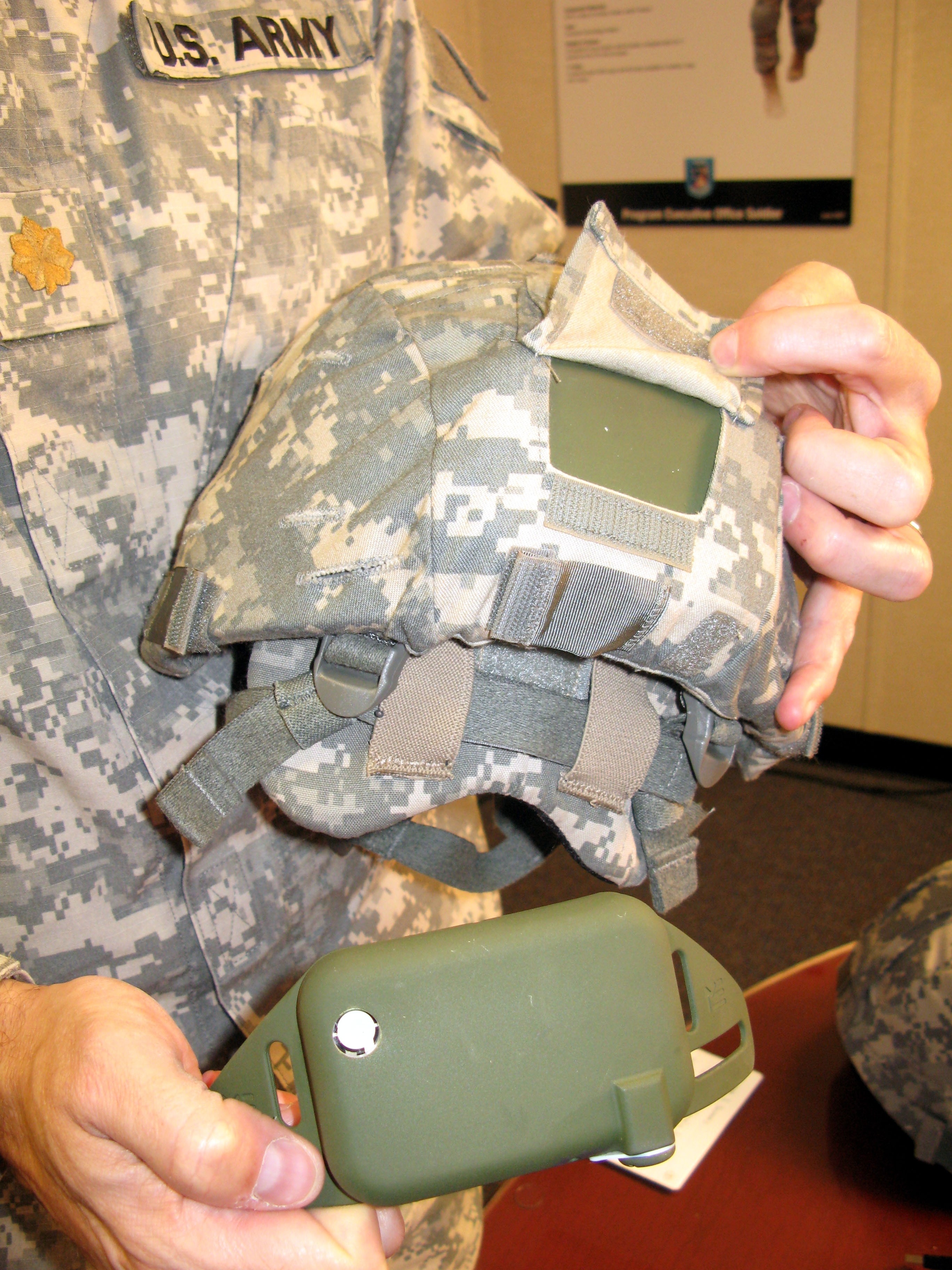FORT BELVOIR, Va., (AFPS, Jan. 7, 2008) - Soldiers from the 101st Airborne Division preparing to deploy to Afghanistan are being issued sensors that attach to their helmets to measure the impact from blasts, roadside bombs and other activities.
About 1,200 "Screaming Eagles" already have the new sensors, and the rest will receive them within the next month, said Maj. William Schaffer, a product manager in the Army's Program Executive Office Soldier, based here.
Meanwhile, troops from the 4th Infantry Division are scheduled to receive helmet sensors with similar capabilities before their deployment to Iraq this fall, Schaffer said.
The sensors gather data on impacts ranging from a dropped or kicked helmet to a vehicle crash to a nearby weapon firing or explosion, Maj. Schaffer explained. They measure two specific actions: the energy wave generated by the "event," and the "acceleration" or jolt that follows.
In the short term, data collected through the sensors is expected to help the Army improve the helmets and other protective equipment it provides its soldiers, Maj. Schaffer said.
A longer-term application - one Maj. Schaffer emphasized the medical community isn't yet ready for - is to use impact data to help diagnose traumatic brain injuries.
"With the number of IEDs that we're seeing in Iraq and the traumatic brain injury that's coming out of it, obviously somewhere down the line we are looking at correlating the blast and the injury," he said. "But in the near term, we are looking at developing a more protective piece of equipment. The advanced combat helmet we have out there is the best in the world, but we are always looking at ways to make our products better, and this is a great way to start."
Gen. Richard A. Cody, Army vice chief of staff, ordered the helmet sensor program in June. Three months later, the Program Executive Office Soldier had come up with several potential helmet sensors and was putting them through extensive testing at Aberdeen Proving Ground, Md.
Within six months of getting its marching orders, officials narrowed the field to the most promising models: one mounted externally and one internally. "We came up with two of the best sensors, and we're now preparing to field both of those," Maj. Schaffer said.
The model going to the 101st Airborne Division attaches to the back of the advanced combat helmet, protected by a hardened casing that is covered by a camouflage flap. It weights about 6 ounces and has a six-month battery life. The sensor remains in a "sleep" mode, automatically turning itself on and capturing data from an event, then turning itself off. It has enough memory to store data on 527 events.
To harvest information from the sensor, a soldier simply connects it to a computer using a USB port, hits "save" and sends the data to a secure database.
An internally mounted model to be fielded to the 4th Infantry Division sits under the padding in the crown of the helmet. It has a rechargeable battery, but otherwise has the same capabilities as the externally mounted sensor.
"One is protected by the helmet itself, and one by the hardened casing around it," Maj. Schaffer said. "Both measure impact and acceleration."
Initial input from 101st Airborne Division soldiers shows they are happy to play a part in helping the Army improve its helmet protection, Maj. Schaffer said. He noted that many of the soldiers have experienced blasts or accelerations during past deployments and recognize the value of the sensor technology in developing the next-generation combat helmet.
"This shows everybody that the Army cares," Maj. Shaffer said. "We have got the best equipment in the world, but we are not resting on our laurels. We are always looking forward, always looking for the next generation of protective equipment to take care of the soldiers."






Social Sharing